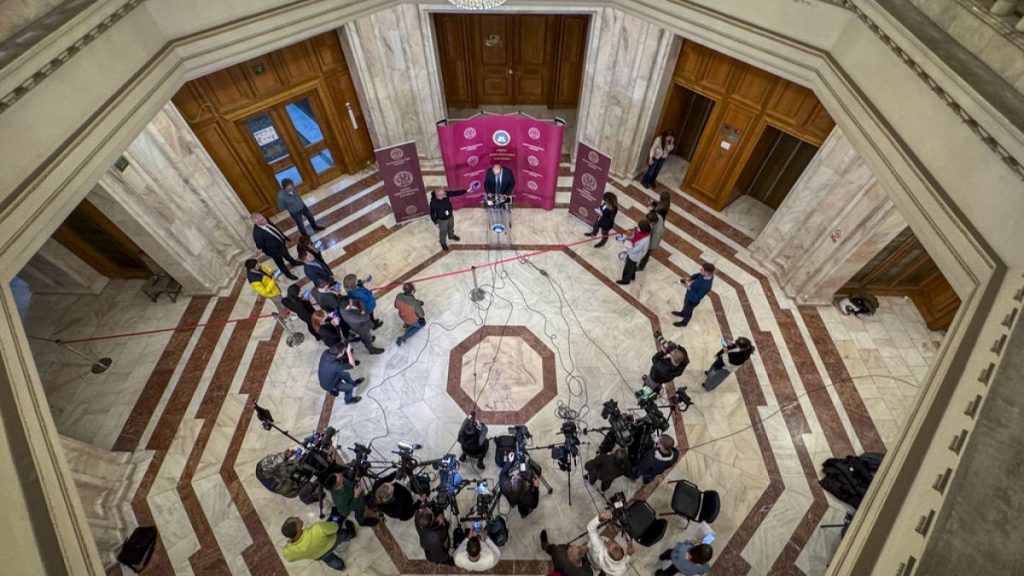The Romanian Constitutional Court’s annulment of the presidential election, prompted by alleged Russian interference, has sparked a debate about the balance between safeguarding democracy and upholding judicial procedures. While experts acknowledge the urgency of the situation, concerns have been raised about the court’s unusual and unprecedented decision to bypass established protocols and act without an official complaint. This has led to questions about the court’s legitimacy and transparency, particularly in light of its composition of politically appointed judges.
The court’s decision to cancel the election was triggered by declassified intelligence suggesting a widespread Russian campaign on social media to promote candidate Georgescu. This move came as a surprise, particularly given the court’s initial announcement to consider annulment only after the second round of voting. This shift in approach, coupled with the absence of a formal complaint from any state body, has raised eyebrows. Experts argue that such a drastic decision, without a clear legal basis or a transparent process, could undermine the very democratic principles the court seeks to protect.
The court’s justification for its decision centered on the illegal use of digital technologies, including artificial intelligence, and undeclared funding sources, pointing to preferential treatment for a specific candidate, later identified as Georgescu. However, the court refrained from providing specifics about the evidence of Russian interference, offering only abstract terms. This lack of transparency, alongside the court’s preemptive action just two days before the end of the electoral process, has fueled skepticism about the true scale of the alleged interference. The timing of the intervention, while votes were still being cast by the Romanian diaspora, further complicates the matter, emphasizing the need for clear and compelling justification.
Critics argue that the court’s actions, while potentially well-intentioned, have created a dangerous precedent. By circumventing established procedures and acting on its own initiative, the court has exposed itself to accusations of overreach and political bias. The lack of transparency surrounding the evidence of foreign interference further weakens the court’s position. While the court may have acted in what it believed to be the best interest of Romanian democracy, the manner in which it did so raises serious questions about its own legitimacy and credibility.
The composition of the Constitutional Court, with its politically appointed judges, adds another layer of complexity to the situation. This political influence, critics argue, undermines the court’s impartiality and opens the door for accusations of political maneuvering. The perception of the court as acting on behalf of political masters, rather than as an independent arbiter of the Constitution, erodes public trust and diminishes the legitimacy of its decisions. This structural weakness of the judiciary system casts a shadow over the court’s ability to effectively safeguard democracy.
The case highlights the inherent tension between protecting democratic processes and upholding judicial independence and transparency. While swift action may be warranted in situations involving foreign interference, such actions must be grounded in clear legal principles and conducted with utmost transparency. Failing to adhere to established procedures and provide concrete evidence not only undermines public trust in the judiciary but also creates a dangerous precedent for future interventions. The Romanian case serves as a stark reminder of the importance of a robust, independent, and transparent judicial system, particularly in times of political uncertainty and external threats.














